I am not as sharp when it comes to use python and matplotlib, but I wanted to share my experience. My trouble is that my X and Y datasets were not the same length, as well as being relatively heavy datasets, which turned out to be dysfunctional using any of the methods mentioned above. Therefore, I used the heavy, inelegant method with a loop to populate the Z matrix. It takes 2-3 minutes on my laptop, but it does exactly what I want.
"""
@author: Benoit
"""
import matplotlib.pyplot as plt
plt.style.use('seaborn-white')
import numpy as np
import matplotlib.cm as cm
data = np.genfromtxt('MY_DATA_FILE.csv', delimiter=';', skip_header = 1)
#list of X, Y and Z
x_list = data[:,0]
y_list = data[:,1]
z_list = data[:,2]
length = np.size(x_list)
#list of X and Y values (np.unique removes redundancies)
N_x = np.unique(x_list)
N_y = np.unique(y_list)
X, Y = np.meshgrid(N_x,N_y)
length_x = np.size(N_x)
length_y = np.size(N_y)
#define empty intensity matrix
Z = np.full((length_x, length_y), 0)
#the f function will chase the Z values corresponding
# to a given x and y value
def f(x, y):
for i in range(0, length):
if (x_list[i] == x) and (y_list[i] == y):
return z_list[i]
#a loop will now populate the Z matrix
for i in range(0, length_x - 1):
for j in range(0, length_y - 1):
Z[i,j] = f(N_x[i], N_y[j])
#and then comes the plot, with the colour-blind-friendly viridis colourmap
plt.contourf(X, Y, np.transpose(Z), 20, origin = 'lower', cmap=cm.viridis, alpha = 1.0);
cbar = plt.colorbar()
cbar.set_label('intensity (a.u.)')
#optional countour lines:
"""contours = plt.contour(X, Y, np.transpose(Z), colors='black');
plt.clabel(contours, inline=True, fontsize=8)
"""
plt.xlabel('X_TITLE (unit)')
plt.ylabel('Y_TITLE (unit)')
plt.axis(aspect='image')
plt.show()
plt.savefig('TYPE_YOUR_NAME.png', DPI = 600)
diffraction 2D example

